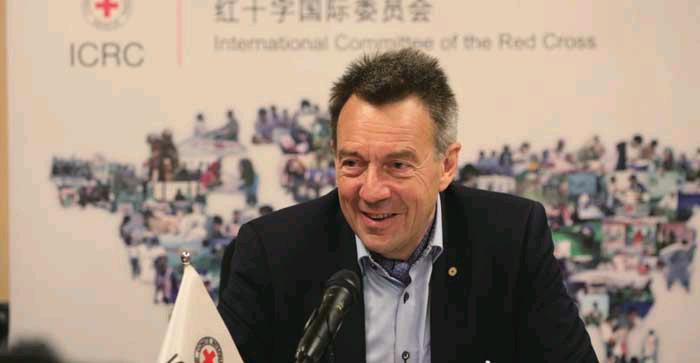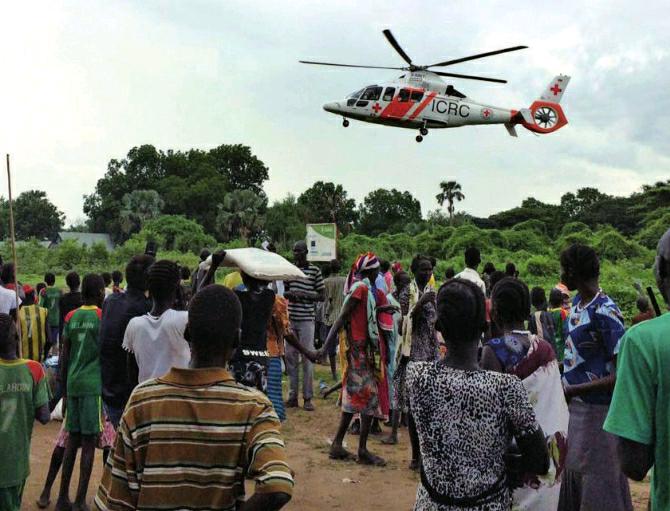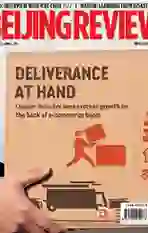Reading The Needs Of People
2017-06-15
Providing neutral, impartial and independent humanitarian assistance in sometimes protracted conflicts and situations of violence can create an environment conducive for development but how is this achieved? Peter Maurer, President of the International Committee of the Red Cross (ICRC), spoke to Beijing Review reporter Liu Jian about humanitarian work in todays globalized context.
Beijing Review: How can the ICRC share its experience and knowledge and bring added value to the Belt and Road Initiative?
Peter Maurer: The ICRC has signifi cant and often long-term operations in 40 countries along the Belt and Road. It has a deep understanding of local security and humanitarian dynamics, as well as fi rst-hand knowledge of development challenges. It can contribute to the Belt and Road Initiative by fostering solid partnerships with the Red Cross Society of China for long-term cooperation within this framework.
In the future, a lot will depend on how the states involved in the Belt and Road Initiative want to interact with organizations like the ICRC, and what kind of platforms of cooperation will be founded.
What role will the ICRC play in connecting people in countries involved in the Belt and Road Initiative?
Our activities are rooted in the people in society,[and] what we do is to respond to the needs of people. The best way to connect people, to bring them together, is always to work together—its always good to talk together but its even better to work together. What the ICRC brings is a body of experience where people from different horizons, cultures and societies work together to address the needs of people.
We are responding to the needs of people, we are bringing people together to overcome their differences. We hope China will be a more important contributor to some of the activities of the Red Cross and Red Crescent, the ICRC in particular. I hope the Belt and Road Initiative will, fi rst and foremost, be a tool which will bring China closer to the work that the ICRC is engaged in.
What long-term humanitarian assistance does the ICRC offer?
Our long-term assistance is similar to development work but implemented in unstable and violent contexts. It has to follow a specific modus operandi. For example, the ICRC fixes and sets up water and energy infrastructure, and we support hospitals and orthopedic centers. We train locals to develop skills and we help people start sustainable small businesses. In doing so we build stability and we prepare the ground so that when the fighting stops, recovery, reconstruction and economic development can start quickly.
Countries are different in terms of language, culture, tradition and climate. How does the ICRC offer tailor-made humanitarian responses to address problems in different countries?
Of the 16,000 ICRC staff, 13,000 are locally recruited. Additionally, we are part of the larger International Red Cross and Red Crescent Movement, with more than 17 million volunteers in 190 countries. So we are, to a large extent, a local and global organization. Our approach has always been that we want to be close to people, read the needs of local people correctly, and be with society. I think this has helped us focus on the specifi city of each and every context.
We dont come with a tailor-made approach, we only say our starting points are the needs of people and we want to look at each and every context specifically and design solutions depending on what the context is. In that sense, a big help is that the national Red Cross and Red Crescent societies are part of the same movement, bound by the same principles. This is what helps us read the national contexts more accurately. We ourselves have become, as many say, a global and local organization.
This is also of strategic importance for the Belt and Road Initiative. We need context, specifi city and local adaptation of solutions, but we also need a global community which is responsibly dealing with those issues. You need global and local perspective; you need a global strategy and local implementation. Local problems need to feed the global strategy.
What are the major humanitarian challenges facing Africa?
In Africa, confl ict and violence are destroying development progress. What we see now in Somalia, South Sudan and Mali are the combination of conflicts and natural disasters in terms of climate change and rain pattern changes. Climate change and violence are building in an explosive mix, and societies are exploding.
In the famine-stricken countries, there is a vicious circle in the dynamic compounded by violence and natural disasters, leading to what I call hyper-fragility. Hyper-fragility is extreme fragility where natural disaster, violence, corruption, and lack of governance and rule of law all come together and suddenly leave a huge part of the population in distress.
When we talk about famine today in Africa, its actually more than famine. Its famine plus—lack of water resources, livelihood, economic development and community development. There is a naive perception that if we could send food to Africa everybody would be fi ne. We have to look at the complexities.
